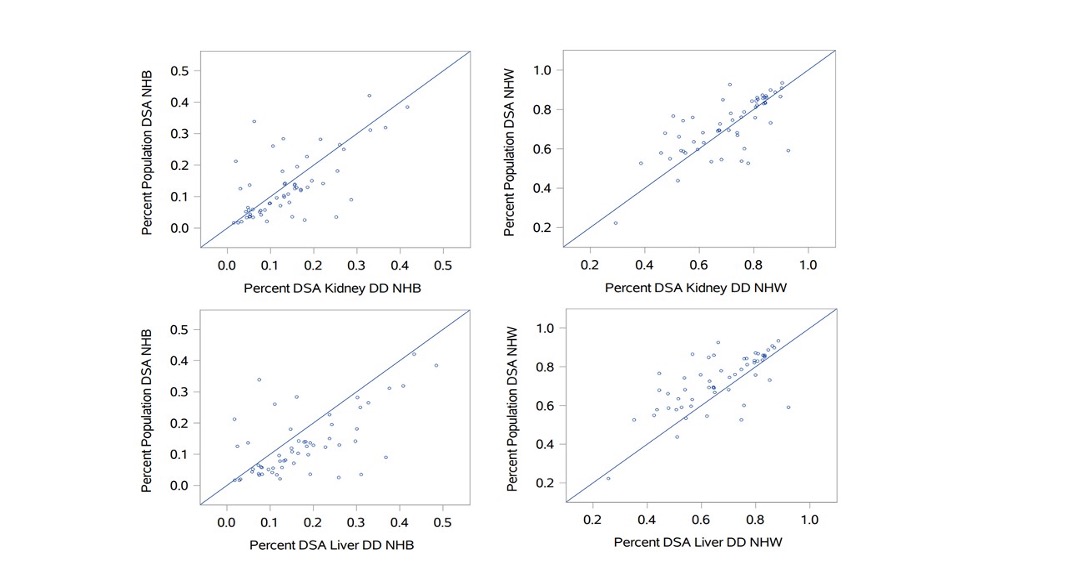Donor Service Area Characteristics Impacting Liver and Kidney Deceased Donor Population
Surgery, -University of Florida, Gaiinesville, FL
Meeting: 2021 American Transplant Congress
Abstract number: 376
Keywords: African-American, Donation, Hispanic, Kidney/liver transplantation
Topic: Clinical Science » Organ Inclusive » Deceased Donor Management and Intervention Research
Session Information
Session Name: Surgical Issues and Deceased Donor Management
Session Type: Rapid Fire Oral Abstract
Date: Tuesday, June 8, 2021
Session Time: 6:00pm-7:00pm
 Presentation Time: 6:10pm-6:15pm
Presentation Time: 6:10pm-6:15pm
Location: Virtual
*Purpose: While there is ample evidence of racial and ethnic disparities in access to the waitlist, being transplanted, and post-transplant outcomes in liver and kidney transplantation, there has not been much investigation into the race/ethnicity of deceased donors (DD). Donor service areas (DSA) are tasked with providing access to allografts from their constituent populations. Although there are reports of lower donation rates in non-White populations, DSA specific factors affecting this have not been closely examined.
*Methods: DSA specific adult liver and kidney DD data were obtained from the Scientific Registry of Transplant Recipient files between January 2013 and December 2018. Race/ethnicity distributions from each DSA (n=57) were compared to DSA population demographics as calculated from 2017 5-year estimate US Census data. DSA-specific characteristics were correlated with differences for Non-Hispanic White (NHW), Non-Hispanic Black (NHB), and Hispanic populations through logistic regression and scatterplots. Statistical analyses were conducted using SAS 9.4.
*Results: NHBs were consistently overrepresented among deceased donors in the vast majority of DSAs when compared to the total population (liver 50/57, 86%) (kidney 38/57, 67%). NHW and Hispanic deceased donors were underrepresented as compared to the respective population of the DSA. Predictors of DSAs overrepresenting NHB liver donors were DSA population poverty (p-value=0.02), under high school education (p-value=0.02), and no insurance (p-value=0.02). No significant predictors were identified for NHBs in kidney donation or for NHWs in either liver or kidney donation.
*Conclusions: Comparing donation rates to the total population, as opposed to the deceased population, highlights the overall health disparities in the general population. While further work is essential to fully understanding the underlying causes and potential remedies, the contradictory findings that indicate a lower than expected donation rate from “eligible donors” will need to be examined closely in light of these data. Further analysis is underway to understand additional factors associated with underutilization of donors in each DSA and to find potential ways to mitigate them.
To cite this abstract in AMA style:
Warren CO, Zarrinpar A. Donor Service Area Characteristics Impacting Liver and Kidney Deceased Donor Population [abstract]. Am J Transplant. 2021; 21 (suppl 3). https://atcmeetingabstracts.com/abstract/donor-service-area-characteristics-impacting-liver-and-kidney-deceased-donor-population/. Accessed December 13, 2025.« Back to 2021 American Transplant Congress

